Is there a better way to preserve one of summer's most delicious crops than by making a big batch of blueberry jam? This blueberry jam recipe contains no pectin and is made for canning so you can quickly and easily preserve your bounty of blueberries this summer.
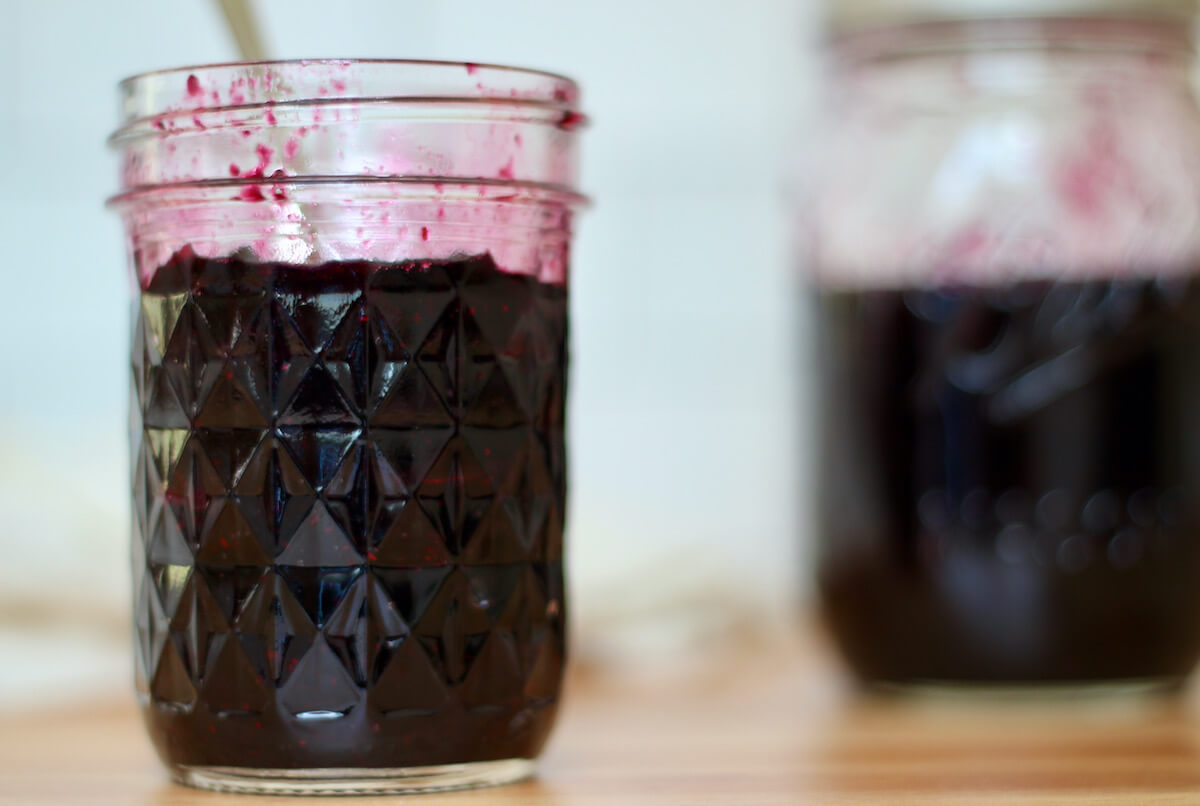
Every year, right around the beginning of May, my anticipation for summer begins (my second favorite season). Beach days, backyard barbecues, and bees buzzing through the garden are all things I look forward to. But, what I look forward to most of all is berry season.
Summertime means berries are back in season here in Massachusetts. And to me, there is nothing better than fresh berries sprinkled in my oatmeal or yogurt, or just simply enjoyed as a snack. Plus, berries are super good for you too!
One of my favorite summer activities is going blueberry picking at a local pick-your-own blueberry farm. I usually end up with a huge box of blueberries that I can turn into pies, galettes, crumbles, and crisps. But, once I have had my fair share of desserts, I often need to find another way to use up the rest of my blueberries.
I love making and canning blueberry jam because it means I'll get to enjoy my freshly picked blueberries all year long. There is something very satisfying about preserving food you grew or picked yourself.
This recipe makes two 16-ounce or four 8-ounce jars of jam. Split it up however you see fit! I like putting mine in the 8-ounce-sized jars so I can share with family and friends. Jam makes for a wonderful gift.
So, if you're interested in making and canning your own blueberry jam, keep reading to learn everything you need to know.
Disclaimer: Some links throughout this post are affiliate links. As an Amazon Associate, I earn from qualifying purchases. You can learn more by visiting my Affiliate Disclosure Page.
Why This Recipe Works
- Preserving the Harvest- Whether you grow your own blueberries, pick or purchase them at a local farm, or you just bought way too many at the grocery store, this blueberry jam is a great way to use them up so they don't spoil. You'll love being able to enjoy the taste of delicious, in-season blueberries all year long.
- Easy to Make- This jam could not be any easier! Made using only 3 ingredients and one pot, you'll have a big batch of jam whipped up in no time.
- No Pectin- I love pectin-free jam recipes because they're simple and they typically require less sugar than a jam recipe that uses pectin.
Ingredient Notes
Here are some notes on key ingredients. For a full list of ingredients, check out the recipe card below.
- Blueberries- July and August are easily some of my favorite months for seasonal produce. In particular, blueberries are abundant here in Massachusetts, where I live. If you can, I recommend finding a pick-your-own blueberry farm in your area and stocking up. Then, make enough blueberry jam to last you all year long.
- Sugar- A necessity in jam, sugar helps with preservation by inhibiting bacterial growth in the finished jam. It's similar to salt in its ability to preserve foods. Sugar also plays an important role in helping the natural pectin in the blueberries form a gel-like structure.
- Lemon Juice- Another key ingredient, lemon juice helps the pectin create the necessary structure to "set" the jam by lowering the pH. Since it's an acid, it also helps to prevent bacterial growth and gives the jam a longer shelf-life.
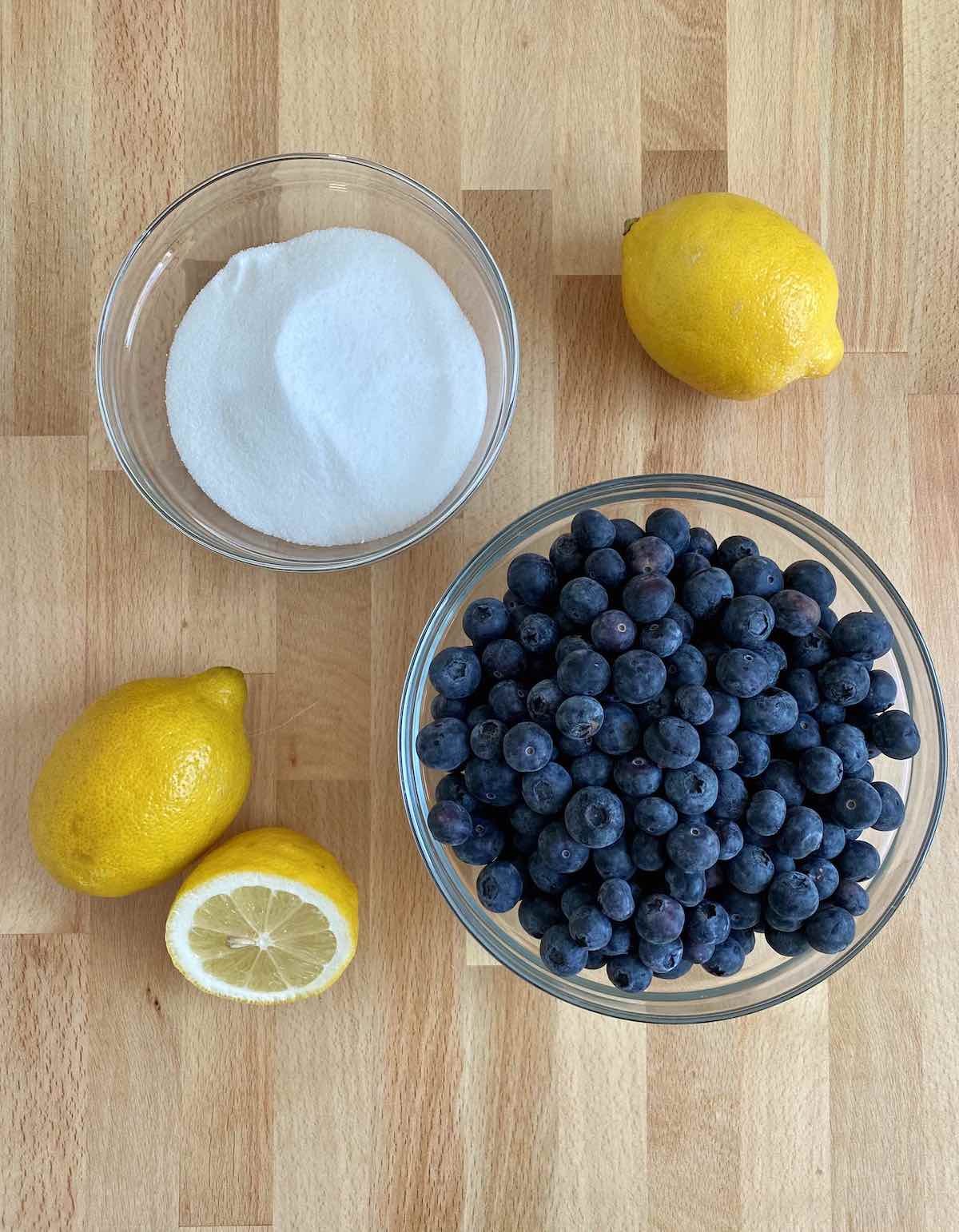
How to Make Blueberry Jam
Here is how to make this simple blueberry jam.
Step 1: Prepare the blueberries. Thoroughly rinse and clean your blueberries, making sure there are no stems, leaves, or other debris in your batch.
Step 2: Mash the blueberries. Add the blueberries, sugar, and lemon juice to a large pot over low heat. Allow the sugar to dissolve as you mash the blueberries with the back of a wooden spoon or with a potato masher. Mashing the blueberries into the sugar helps the berries begin to release their juices.
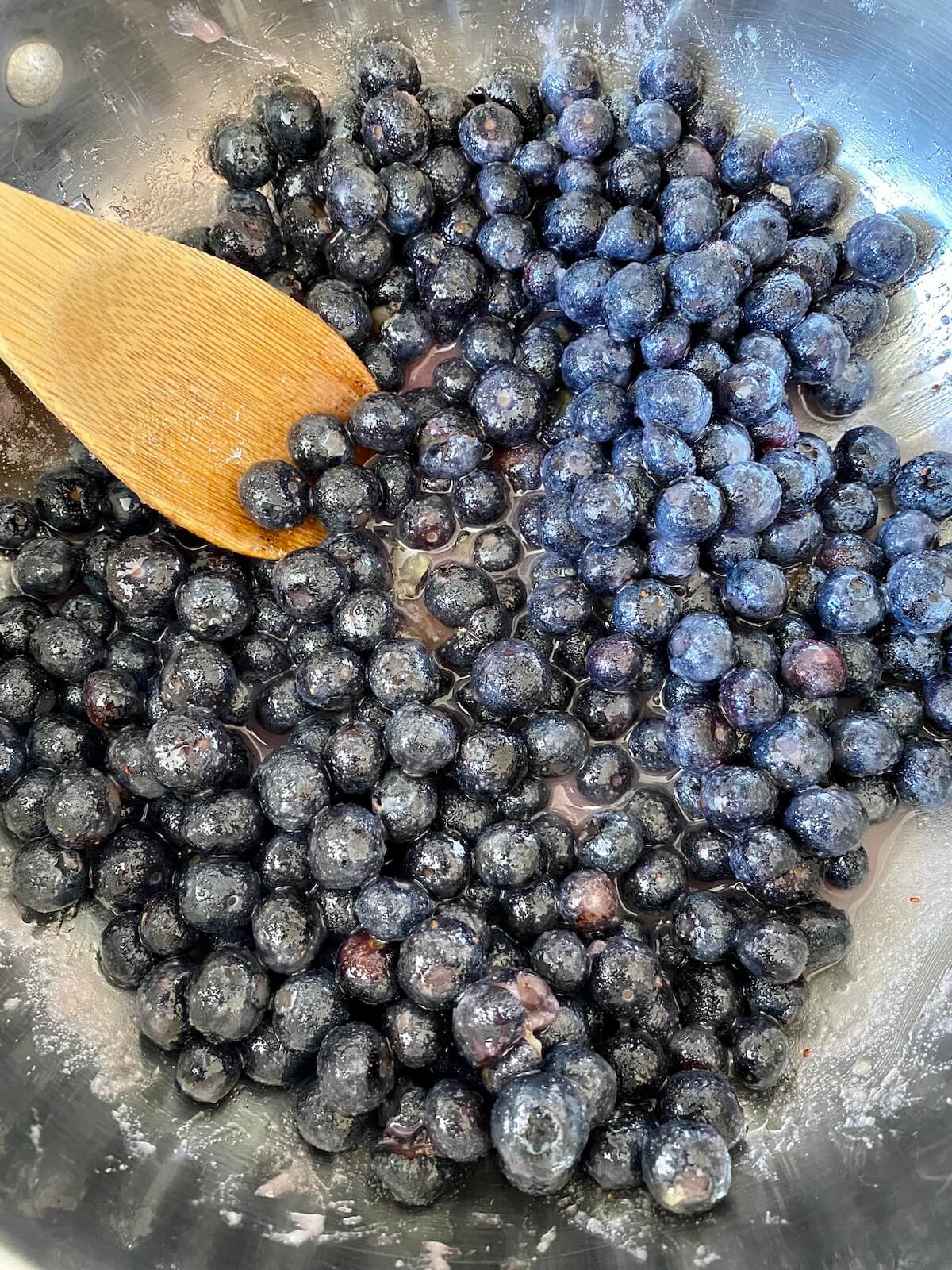
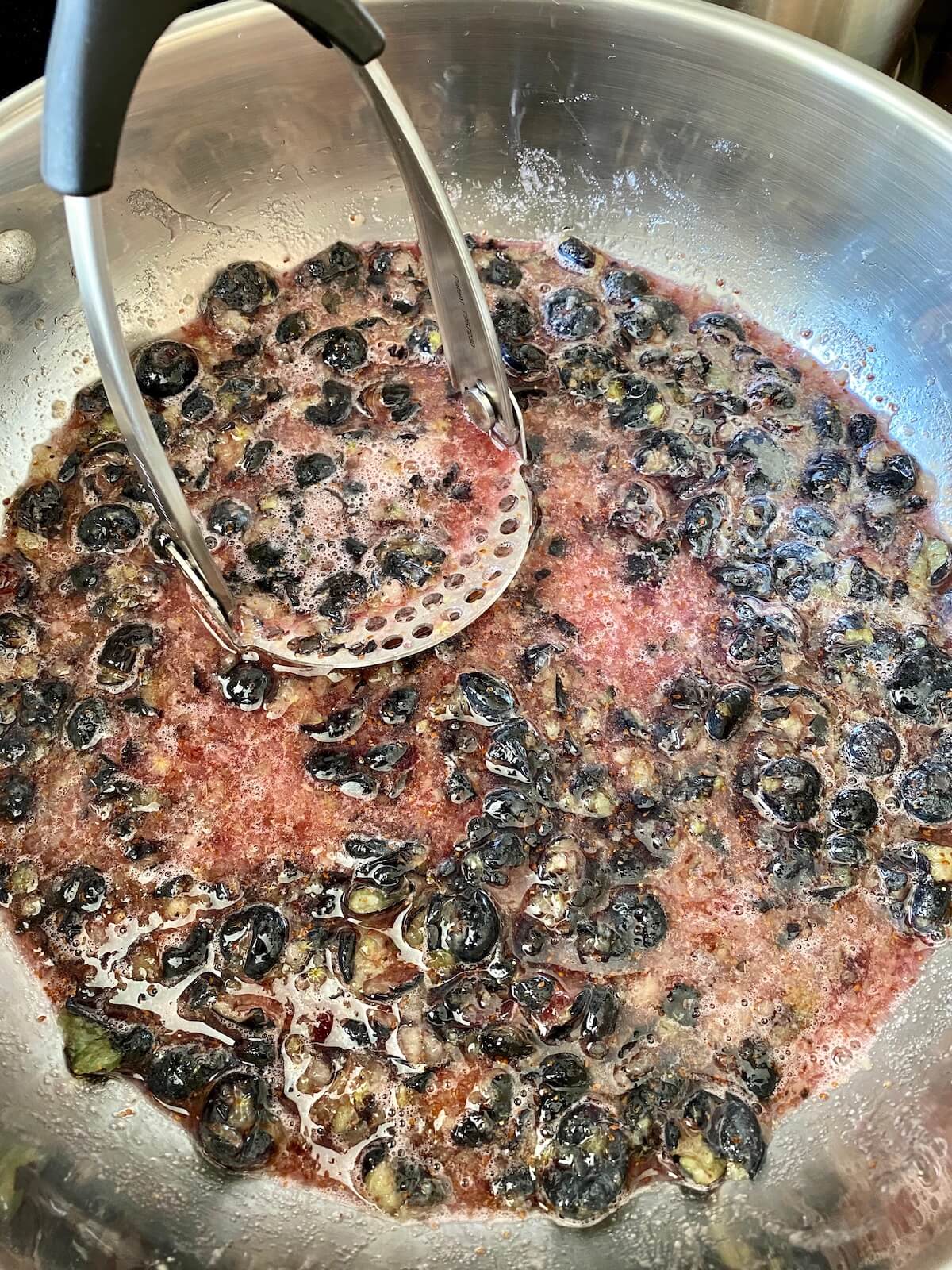
Step 3: Boil your jam. Once the blueberries are sufficiently mashed and the sugar has dissolved completely, turn the heat up to medium-high and bring the mixture to a boil. Allow the jam to boil, stirring continuously, until the temperature reaches 220°F, about 20 minutes. If you don’t have a thermometer, you can tell the jam is done when it easily coats the back of a metal spoon. Remove from heat.
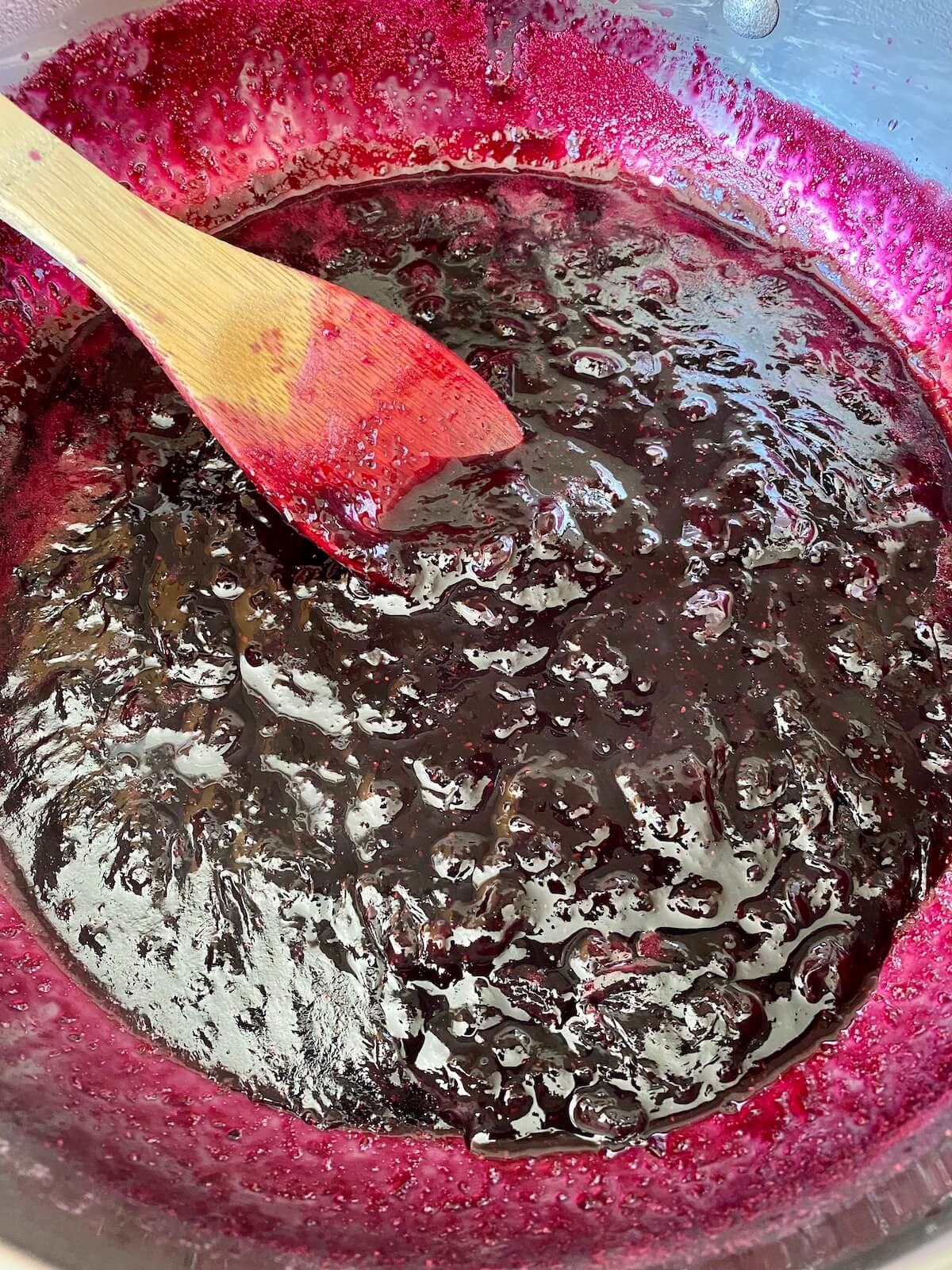
At this point, you can store your jam in the refrigerator to be eaten within 3 months. However, if you want to learn how to preserve your jam for a longer shelf-life, read the water bath canning method section below.
Water Bath Canning Method
Here is how to preserve your jam using the water bath canning method.
Step 1: Sterilize the jars. Place your mason jars in the bottom of a deep stockpot or water bath canner fitted with a canning rack. If you don't have a canning rack, you can use a clean kitchen towel on the bottom of the pot to prevent the jars from sitting directly on the heat. Fill the pot with water, making sure the jars are covered by at least an inch of water. Bring the water to a rolling boil and boil the jars for 10 minutes to sterilize.
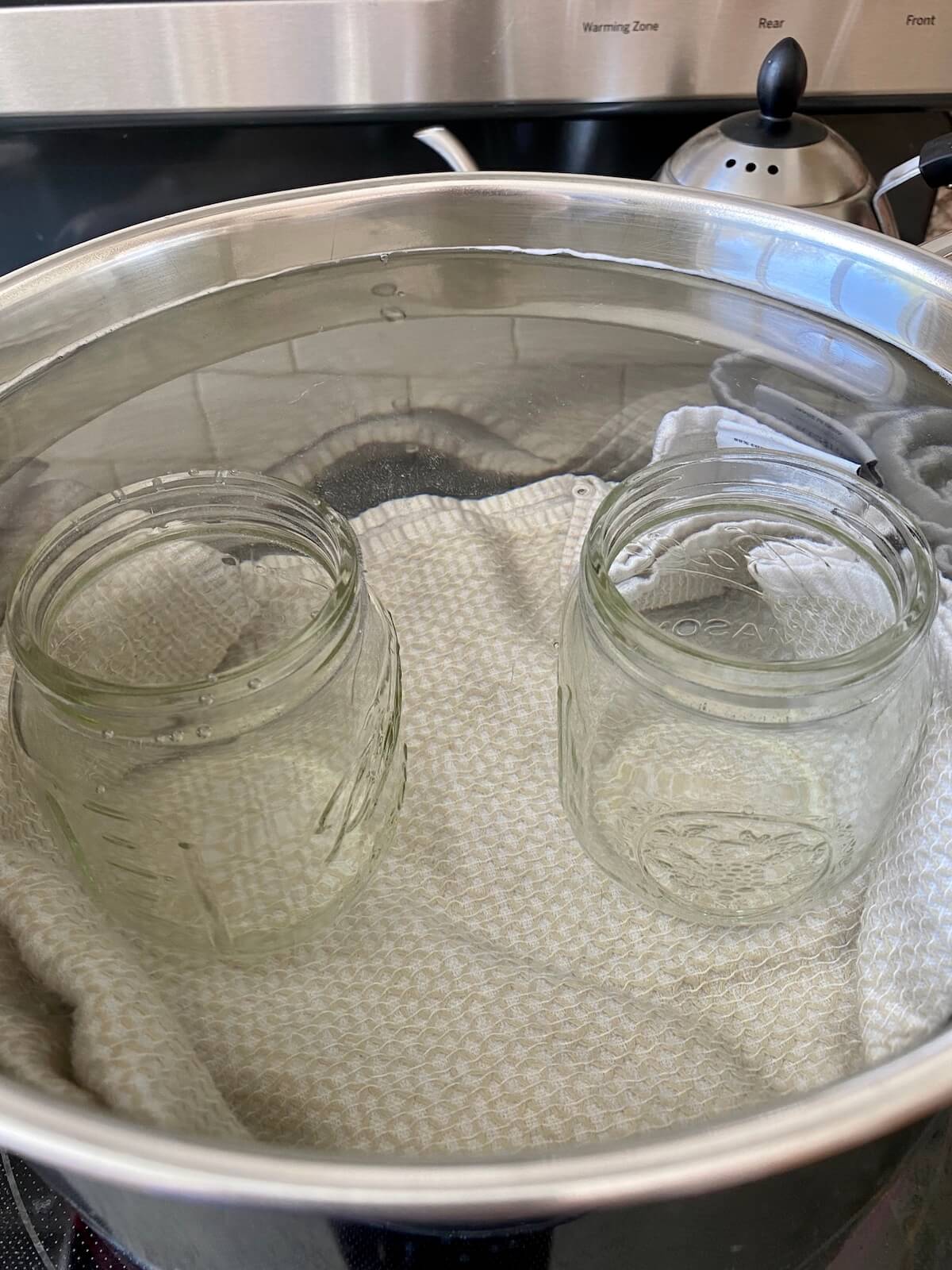
Step 2: Fill the jars. Once the jars are sterilized, turn off the heat. Using a jar lifter, remove the jars from the water and place them on a towel on the counter. You will use the same pot of water to can the jam. Fill your jars with the finished blueberry jam, ensuring you leave a ¼-½ inch of head space at the top of the jar. A canning funnel is extremely helpful here, but if you don’t have one, just make sure to wipe away any residue on the mouth of the jar before putting the lids on.
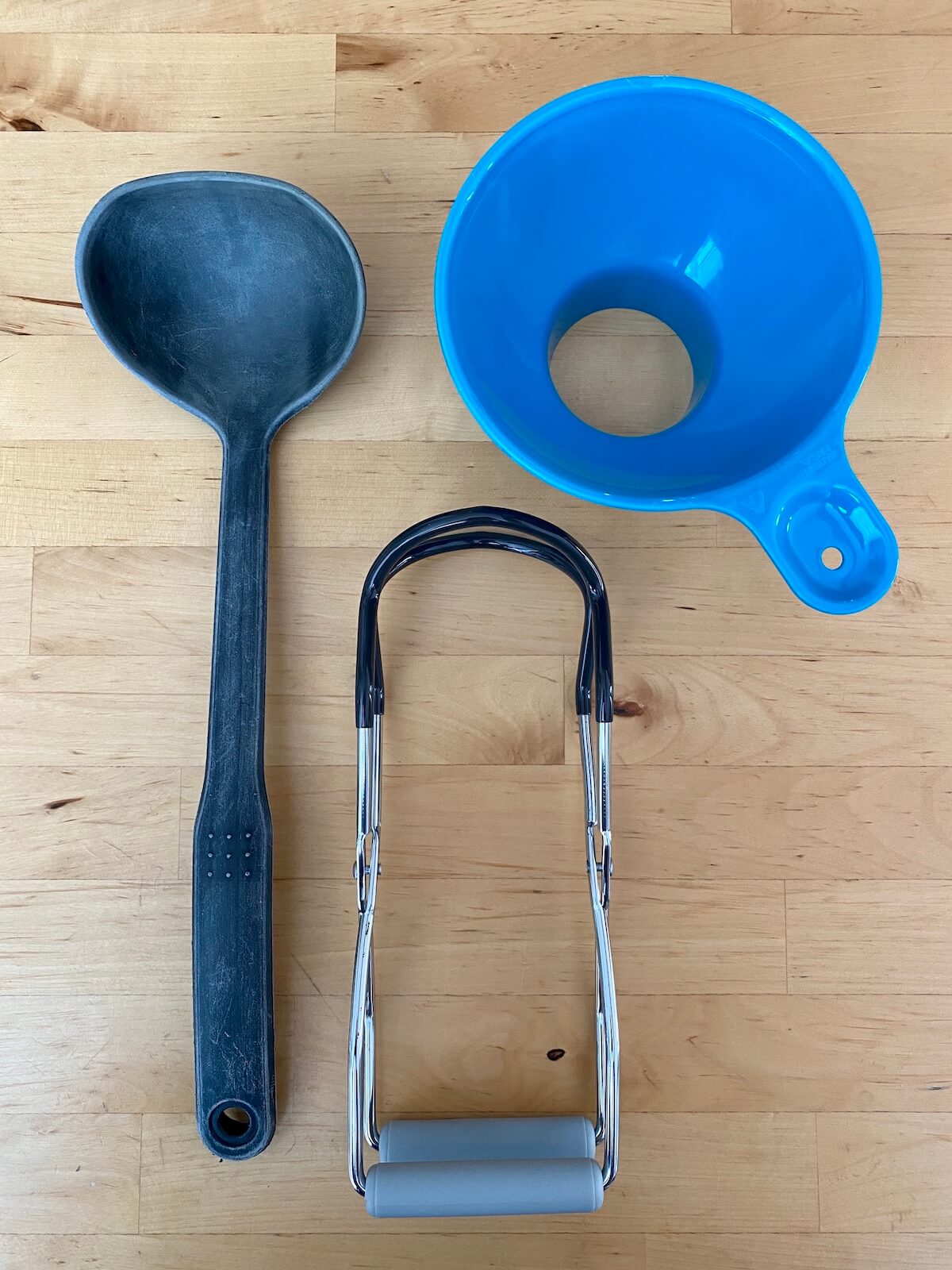
Step 3: Boil the prepared jars. Carefully tighten the lids onto the jars and place the jars back into the hot water bath. Again, make sure the jars are submerged completely in the water and covered by about 1-2 inches. Cover the pot and bring the water to a boil over medium-high heat. Allow the jars to boil for 10 minutes, then turn off the heat.
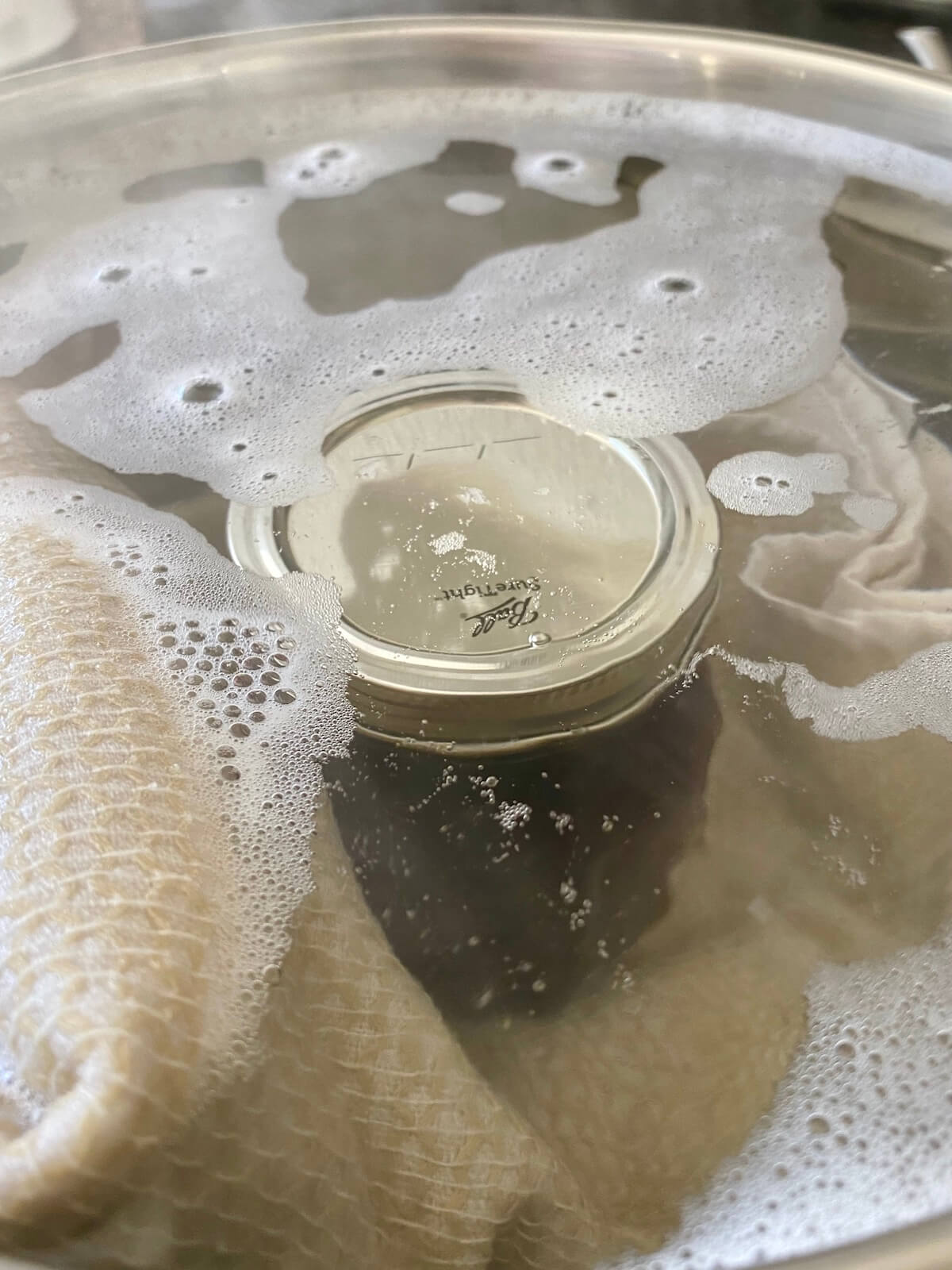
Step 4: Cool completely. Let the jars rest in the hot water for 5 minutes prior to removing them to a clean kitchen towel on the counter. Allow the jars to cool, undisturbed, for 12-24 hours. You should hear a popping sound from each jar after a few minutes, which means you have successfully created a seal.
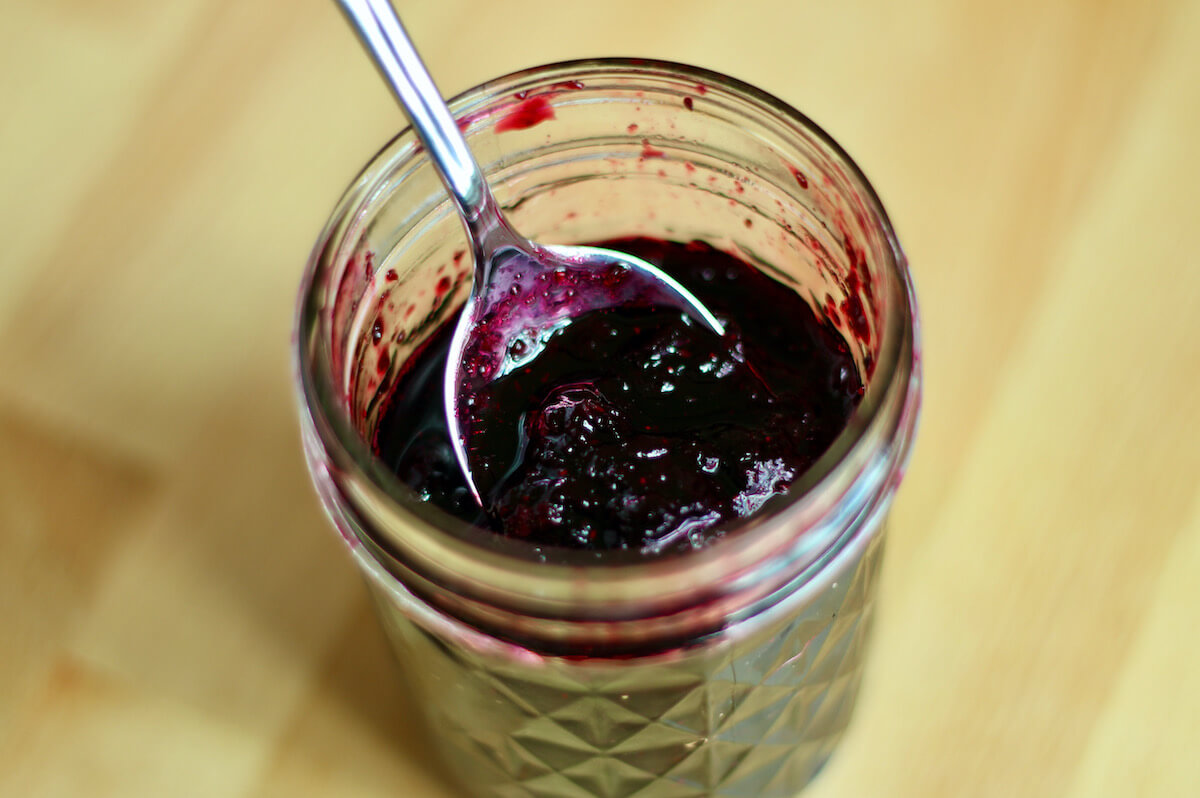
Tips and Tricks
- Ensure your pots are large enough. This goes for both the saucepan you make your jam in as well as the stockpot or canner you use to sterilize and seal your jars with. Jam can quickly bubble over and become a huge mess if not boiled in a large enough pot. I always recommend using a saucepan larger than you think you'll need.
- Don't skip sterilizing! I know it's tempting to cut back on the amount of time it takes to can your jam by skipping over the sterilization step, but I strongly urge you not to. Botulism, a potentially deadly toxin produced by bacteria in improperly home-canned foods, is a real risk when canning food at home. For more information, visit the CDC website.
- Use a vinegar rinse to clean your blueberries. Clean berries make great jam. So, I always recommend cleaning your blueberries in a vinegar solution. Simply soak the blueberries in a 4:1 water to vinegar solution for 20 minutes, then rinse under cold, running water. This will help remove any pesticides and dirt hiding on your fruit.
Storage
If You Water Bath Canned
Room Temperature: Unopened, this jam is shelf-stable for 12-18 months. Jars should be kept in a cool, dry, dark place. Don’t forget to label your jars with the date the jam was canned!
Refrigerator: This blueberry jam will stay good in the refrigerator for up to 3 months after opening.
Freezer: If you open your jam and find you won’t be able to use it all before it goes bad, you can store your jam in the freezer for up to 6 months. Leave the jam in the original jar and make sure there is a little room in the jar for the blueberry jam to expand.
If You Did Not Water Bath Can
If you did not use the water bath canning method, then you have two options. Similar to the opened jars above, you can refrigerate your jam for up to 3 months or freeze it for up to 6 months.
Frequently Asked Questions
Yes, you certainly can make jam from frozen blueberries! Frozen blueberries are frozen at peak freshness so they actually make delicious jam. Simply replace the fresh blueberries with an equal amount of frozen blueberries and follow the same recipe instructions.
Note: The frozen blueberries may leach out more water than fresh blueberries would, which just means it will take them a little longer to cook down to jam consistency.
The best way to tell if your jam is done is to use a candy thermometer. Once the jam reaches 220°F, it can be removed from the heat. As it cools, it will set to a jam-like consistency.
If you don't have a thermometer, you can use the frozen plate method. To use this method, just put a plate in the freezer when you begin making your jam. When you believe your jam is ready, remove it from the heat and spoon a little bit onto the frozen plate.
Wait a minute or two before sliding your finger through the jam. If the jam wrinkles and has a gel-like consistency, it is done. If not, place the plate back into the freezer and test again in a few minutes.
No, you do not need to sterilize the mason jar lids prior to canning. Simply wash them in warm, soapy water and dry with a clean kitchen towel. The lids can be used at room temperature.
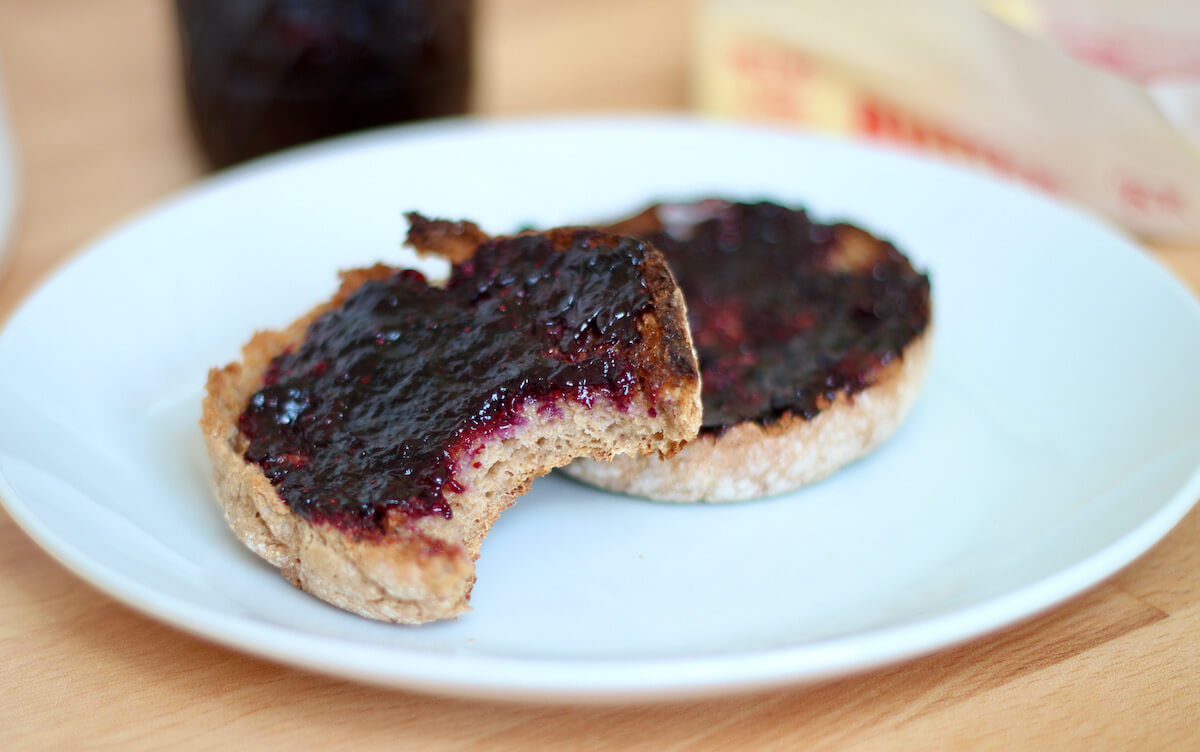
Serving Suggestions
Here are a few of my favorite ways to enjoy this blueberry jam.
- Spread on toast, an English muffin, or a bagel with cream cheese
- Mixed into a bowl of oatmeal or yogurt
- As a topping for my sourdough pancakes or waffles or French toast
- As a frozen yogurt or ice cream topping
- On a charcuterie board or layered on top of a baked brie cheese
- Added to a grilled cheese for a sweet and salty sandwich
- As a cake or cupcake filling
More Jam Recipes
📖 Recipe
Blueberry Jam
Equipment
Ingredients
- 4 pints (about 9 cups) blueberries rinsed and sorted
- 2 cups granulated sugar
- 2 tablespoons lemon juice freshly squeezed
Instructions
Prepare the Jam
- Add the blueberries, sugar, and lemon juice to a large saucepan over medium heat. Using the back of a wooden spoon or a potato masher, mash the blueberries into the sugar so they begin to release their juices. Allow the sugar to completely dissolve.4 pints (about 9 cups) blueberries, 2 cups granulated sugar, 2 tablespoons lemon juice
- Once the sugar has dissolved, increase the heat to medium-high and bring the mixture to a boil. Allow the jam to boil, stirring continuously, until the temperature reaches 220°F on a thermometer or it begins to easily coat the back of a spoon, about 20 minutes. Turn off the heat and set aside.
Water Bath Canning Instructions
- Place your mason jars in the bottom of a deep stockpot or water bath canner fitted with a canning rack. If you don't have a canning rack, you can use a clean kitchen towel on the bottom of the pot to prevent the jars from sitting directly on the heat. Fill the pot with water, making sure the jars are covered by at least an inch of water. Bring the water to a rolling boil and boil the jars for 10 minutes to sterilize.
- Once the jars are sterilized, turn off the heat. Using a jar lifter, remove the jars from the water and place them on a towel on the counter. You will use the same pot of water to can the jam. Fill your jars with the finished blueberry jam, ensuring you leave a ¼-½ inch of space at the top of the jar. A canning funnel is extremely helpful here, but if you don’t have one, just make sure to wipe away any residue on the mouth of the jar before putting the lids on.
- Carefully tighten the lids onto the jars and place the jars back into the hot water bath. Again, make sure the jars are submerged completely in the water and covered by about 1-2 inches. Cover the pot and bring the water to a boil over medium-high heat. Allow the jars to boil for 10 minutes, then turn off the heat.
- Let the jars rest in the hot water for 5 minutes prior to removing them to a clean kitchen towel on the counter. Allow the jars to cool, undisturbed, for 12-24 hours. You should hear a popping sound from each jar after a few minutes, which means you successfully created a seal.
Notes
Nutrition
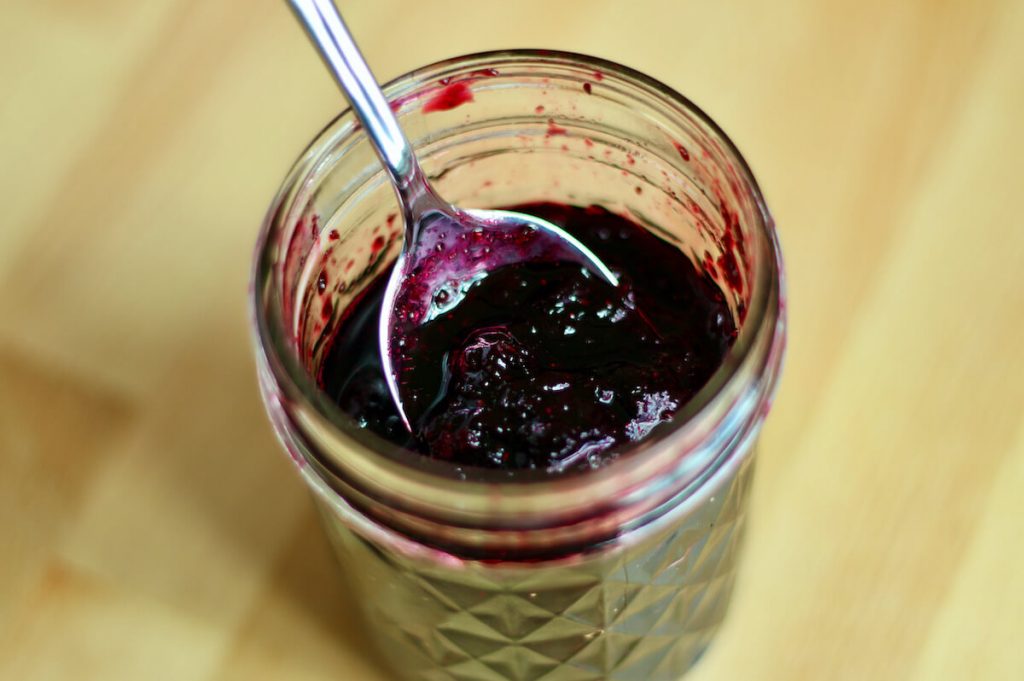
Did you try this recipe?
Let me know! Comment below, or take a picture and tag me on Instagram @enwnutrition.

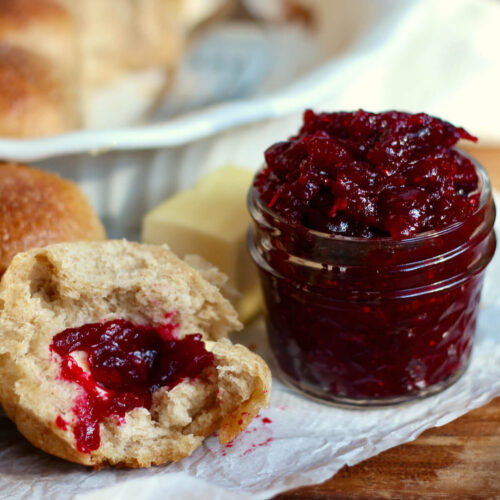
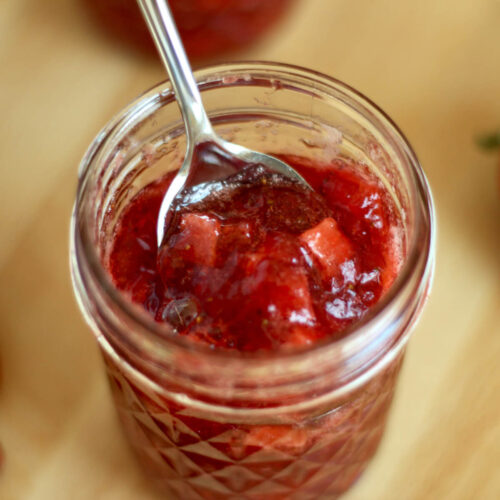
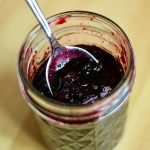
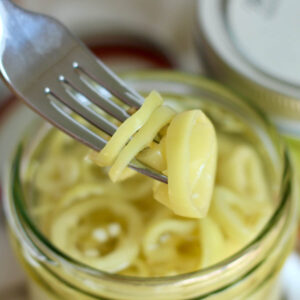



Peg says
Can you use bottled lemon juice?
Ashley Petrie, RDN, LDN says
Hi Peg! Yes, you can use bottled lemon juice.
- Ashley
Tannis says
How long can you store this please?
Ashley Petrie, RDN, LDN says
Hi Tannis! If you canned the jam using the water bath canning method, the jam will be shelf stable for 12-18 months. Once it's open, store it in the refrigerator for up to 3 months. If you didn't can it, it can be refrigerated for up to 3 months or frozen for up to 6 months. Hope this helps! 🙂
Ashley
Oba says
Looking to try your recipe and would like to know what size of jars & quantity is required. Thanks!
Ashley Petrie, RDN, LDN says
Hello! This recipe makes approximately 2 pint-sized mason jars of jam. Hope this helps 🙂 Ashley
Nancy Cottrell says
My jam is way too thick. I wonder if I put it back on the stove and add the pectin it would be ok?
Ashley Petrie, RDN, LDN says
Hi Nancy! This recipe doesn't use pectin to thicken the jam since blueberries are naturally rich in pectin. If your jam is too thick, you can try thinning it with a small amount of water or lemon juice. Hope this helps! Ashley 🙂